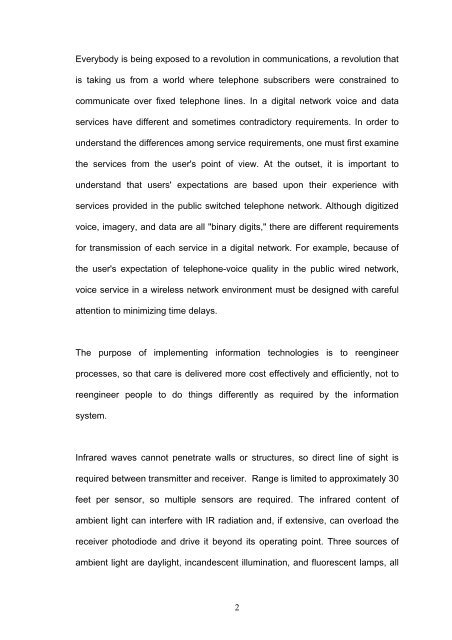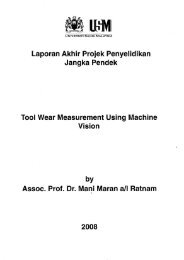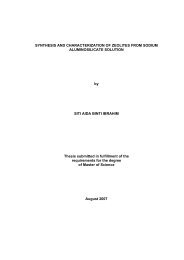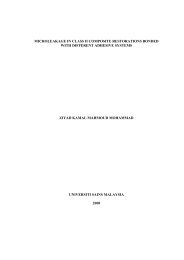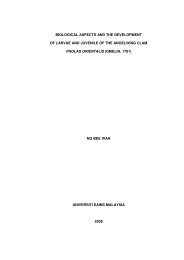design and development of a secure wireless ... - ePrints@USM
design and development of a secure wireless ... - ePrints@USM
design and development of a secure wireless ... - ePrints@USM
You also want an ePaper? Increase the reach of your titles
YUMPU automatically turns print PDFs into web optimized ePapers that Google loves.
Everybody is being exposed to a revolution in communications, a revolution that<br />
is taking us from a world where telephone subscribers were constrained to<br />
communicate over fixed telephone lines. In a digital network voice <strong>and</strong> data<br />
services have different <strong>and</strong> sometimes contradictory requirements. In order to<br />
underst<strong>and</strong> the differences among service requirements, one must first examine<br />
the services from the user's point <strong>of</strong> view. At the outset, it is important to<br />
underst<strong>and</strong> that users' expectations are based upon their experience with<br />
services provided in the public switched telephone network. Although digitized<br />
voice, imagery, <strong>and</strong> data are all "binary digits," there are different requirements<br />
for transmission <strong>of</strong> each service in a digital network. For example, because <strong>of</strong><br />
the user's expectation <strong>of</strong> telephone-voice quality in the public wired network,<br />
voice service in a <strong>wireless</strong> network environment must be <strong>design</strong>ed with careful<br />
attention to minimizing time delays.<br />
The purpose <strong>of</strong> implementing information technologies is to reengineer<br />
processes, so that care is delivered more cost effectively <strong>and</strong> efficiently, not to<br />
reengineer people to do things differently as required by the information<br />
system.<br />
Infrared waves cannot penetrate walls or structures, so direct line <strong>of</strong> sight is<br />
required between transmitter <strong>and</strong> receiver. Range is limited to approximately 30<br />
feet per sensor, so multiple sensors are required. The infrared content <strong>of</strong><br />
ambient light can interfere with IR radiation <strong>and</strong>, if extensive, can overload the<br />
receiver photodiode <strong>and</strong> drive it beyond its operating point. Three sources <strong>of</strong><br />
ambient light are daylight, inc<strong>and</strong>escent illumination, <strong>and</strong> fluorescent lamps, all<br />
2


